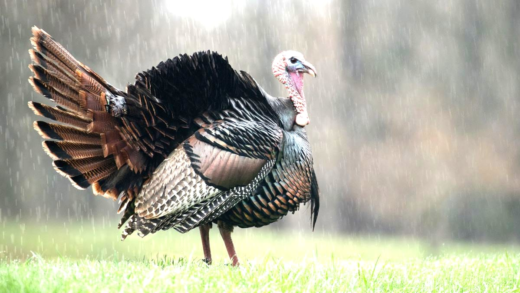This article explores the rare incident of female-on-female killing among orangutans, examining its implications for their social structures and conservation. Insights into the behavior of the killer and community reactions highlight the complexity of orangutan interactions and the impact of environmental pressures on aggression. The findings underscore the importance of understanding animal psychology in developing effective conservation strategies.
What Happened: The Incident Explained
Female orangutan killing is a rare yet shocking behavior observed in the wild. Recently, researchers witnessed an incident where one female orangutan killed another in a seemingly brutal confrontation. This event unfolded in the dense forests of Borneo, where these incredible creatures usually live in harmony. However, the killing was not just a random act of violence; it revealed underlying tensions and social dynamics within the orangutan community.
In the wild, female orangutans typically exhibit nurturing behaviors, caring for their young and maintaining social bonds. Yet, in this case, the killer orangutan exhibited aggressive behavior, suggesting possible competition over resources or territory. Observations indicated that the incident escalated quickly, with the aggressor displaying dominance before the fatal attack occurred.
Such incidents, while rare, provide critical insights into orangutan behavior and social structures. They raise important questions about the pressures these animals face in their environment, including habitat loss and resource scarcity, which may contribute to such violent encounters.
How Researchers Witnessed the Event
The methods used by researchers to observe this alarming incident were both innovative and insightful. They employed a combination of camera traps and direct observation techniques to capture the dynamics of orangutan interactions in their natural habitat. This dual approach allowed for a comprehensive understanding of the behaviors leading up to the killing.
Camera traps provided a non-intrusive way to monitor the orangutans without disturbing their natural behaviors. Researchers set up these devices strategically in areas where orangutans were known to frequent. Over time, they collected valuable footage that documented the social interactions among the community members.
In addition to camera observations, researchers spent countless hours in the field, observing the orangutans firsthand. This hands-on approach enabled them to witness the subtleties of body language and vocalizations that are crucial for understanding the context of the killing. By combining these methods, researchers not only recorded the incident but also gained insights into the social structures and relationships within the orangutan community.
Comparing Orangutan and Human Murders
Comparing orangutan and human murders reveals striking similarities in the underlying motivations and social contexts. While humans often engage in violent acts driven by complex social, psychological, or economic factors, orangutan killings may stem from competition for resources or social hierarchy disputes. Understanding these motivations can shed light on the broader implications of such behaviors.
Both species exhibit behaviors that suggest a deep-rooted instinct for survival. For instance, the killer orangutan may have perceived the other as a threat to her own offspring or access to food. Similarly, human conflicts often arise from perceived threats or competition, whether for territory, resources, or social status.
Furthermore, the reactions of the community following such events can be telling. In human societies, the aftermath of a murder often leads to heightened tensions and changes in social dynamics. In orangutans, observers noted that other members of the community reacted with caution and increased vigilance, indicating a shift in their social interactions following the incident.
These comparisons not only enhance our understanding of orangutan behavior but also prompt reflections on the nature of violence in the animal kingdom and its parallels in human societies.
The Killer’s Behavior: Before and After the Act
Understanding the behavior of the killer orangutan is crucial for grasping the dynamics of this shocking event. Before the act, the killer exhibited signs of heightened aggression, which researchers noted through careful observation. This included vocalizations that indicated distress or dominance. The killer orangutan was often seen engaging in territorial displays, which may have foreshadowed the violent encounter.
After the murder, the killer’s behavior changed significantly. She appeared more isolated, potentially as a result of the social backlash from her community. The aggressive act not only altered her status within the group but also seemed to induce a state of vigilance. The killer was observed avoiding interactions with other orangutans, indicating that the community’s response was one of fear and caution. Such behavioral shifts underscore the psychological impact of violence within the orangutan social structure.
This incident opens up discussions about the behavioral patterns of orangutans, suggesting that their social interactions are more complex than previously understood. The aftermath of such violent acts could lead to long-lasting changes in the community dynamics, where trust and safety may be compromised.
Reactions of Other Orangutans: The Community’s Response
The reactions of other orangutans following the murder were telling. Observers noted a significant shift in the community’s behavior. Many orangutans became increasingly cautious and avoidant, displaying behaviors such as hiding or moving silently through the forest. This indicates a collective awareness of the danger posed by the killer.
In social groups, the response to violence can lead to changes in hierarchy and relationships. Here are some specific reactions observed:
- Heightened Vigilance: Orangutans were seen frequently checking their surroundings and avoiding areas where the incident occurred.
- Social Withdrawal: Many community members distanced themselves from the killer, which likely reinforced her isolation.
- Increased Aggression: Some orangutans displayed aggressive behaviors towards each other, possibly as a means of asserting dominance in the post-incident environment.
This response illustrates the profound impact of the killing on social dynamics. It raises questions about the long-term effects of such violent events on group cohesion and individual behaviors.
Implications for Orangutan Social Structures
The implications of this incident on orangutan social structures are significant. Traditionally, orangutans are seen as solitary creatures, but this event challenges that perception. The violent act revealed a complex social hierarchy where aggression could disrupt established relationships.
Key implications include:
- Reevaluation of Social Bonds: The incident suggests that social bonds among orangutans may be more fragile than previously thought.
- Impact on Reproductive Success: Aggressive encounters can affect breeding opportunities and the survival of offspring, as stressed communities may not thrive.
- Conservation Strategies: Understanding these social dynamics is essential for developing effective conservation strategies. If violence becomes more common due to environmental pressures, it could threaten the species’ survival.
Overall, the incident highlights the need for a deeper understanding of orangutan behavior and social interactions. It prompts researchers to consider how external factors, like habitat destruction, might influence aggression and community dynamics.
Insights into Orangutan Behavior: What We Learned
Orangutan behavior has proven to be more complex than previously thought. The incident of female-on-female killing has shed light on several critical aspects of their social structures and interactions. Firstly, it highlights the potential for aggression that exists even among typically nurturing female orangutans. Researchers noted that these animals can exhibit violent behaviors when faced with competition for resources or social dominance.
Moreover, the event raised questions about the psychological state of orangutans in challenging environments. Increased stress from habitat loss and competition may push these animals toward aggressive behavior, suggesting that their well-being is intricately linked to their living conditions. This insight emphasizes the need for conservation efforts to consider the social dynamics at play, as they directly impact the behavior of orangutans in the wild.
Additionally, the reactions of the community following the incident demonstrated a significant shift in social interactions. The heightened vigilance and avoidance behaviors observed in other orangutans indicate a deep-seated awareness of danger, which can alter the fabric of their social bonds. This incident has broadened our understanding of orangutan behavior, revealing layers of complexity that warrant further investigation.
Conservation Implications: Why This Matters
The implications of the observed killing extend beyond individual behavior, impacting conservation strategies for orangutans. Understanding that aggression can arise from social pressures emphasizes the importance of addressing habitat preservation and resource availability. As human activities continue to encroach on orangutan habitats, the stress levels and subsequent violent behaviors may increase, threatening the species’ survival.
Conservation efforts must adapt to these findings by focusing on creating stable environments where orangutans can thrive without the pressures that lead to aggression. This includes protecting their habitats, ensuring food security, and minimizing disturbances from human activities. Moreover, educating local communities about the social structures of orangutans can foster a greater appreciation for these creatures and enhance conservation initiatives.
Ultimately, the need for effective conservation strategies is more urgent than ever. As researchers continue to explore the complexities of orangutan behavior, it is crucial to implement measures that support their social dynamics and overall well-being.
Animal Psychology: Lessons from the Incident
This incident serves as a poignant reminder of the complexities of animal psychology, particularly in social species like orangutans. The killing revealed that even well-studied animals can exhibit unexpected behaviors under pressure. It challenges preconceived notions about the emotional lives of these creatures, suggesting that they experience stress, fear, and social dynamics similar to those of humans.
Furthermore, the psychological impact of witnessing violence can lead to lasting changes in behavior among other members of the community. The observed shifts in social interactions following the incident underscore the importance of understanding animal psychology in conservation efforts. By recognizing the emotional and social needs of orangutans, we can develop more effective strategies to ensure their survival.
In conclusion, this incident not only deepens our understanding of orangutan behavior but also highlights the intricate relationship between their social dynamics and environmental conditions. The lessons learned from this event can inform future research and conservation efforts, ensuring that we protect not only the species but also the rich social structures that define their existence.





Comments are closed.